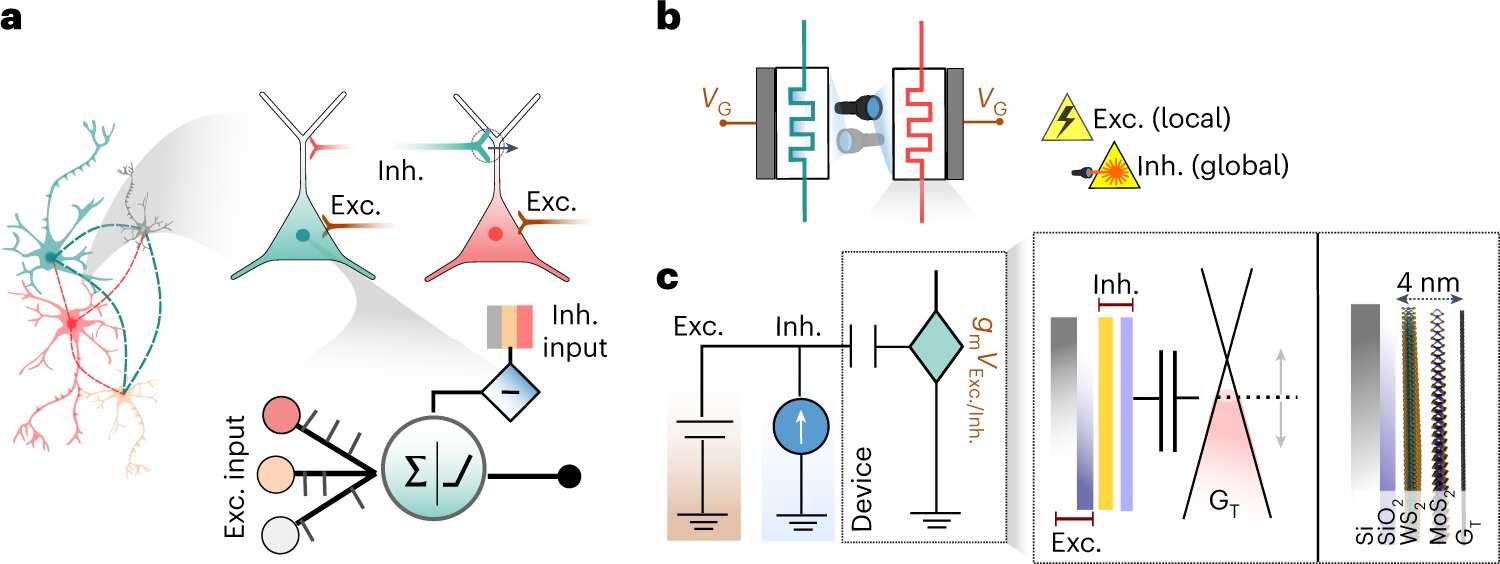

Researchers have been trying to develop more energy-efficient and faster machine learning systems that can replicate the versatile computational abilities of biological neurons for decades. One promising approach has been the use of memristors – electronic components that can store a value by modifying their conductance and then use that value for in-memory processing. However, the key challenge has been integrating both feedforward and feedback neuronal signals to replicate the complex processes of biological neurons and brains.
A team of researchers from Oxford University, IBM Research Europe, and the University of Texas have developed atomically thin artificial neurons that can process both light and electric signals for computing. By stacking two-dimensional materials, the researchers enabled the simultaneous existence of separate feedforward and feedback paths within the neural network, which boosted the ability to solve complex problems.
The researchers expanded the functionality of electronic memristors by making them responsive to electrical as well as optical signals. They used a stack of three 2D materials – graphene, molybdenum disulfide, and tungsten disulfide – to create a device that shows a change in its conductance based on the power and duration of light/electricity. These devices are analog and operate similarly to the synapses and neurons in our biological brain, allowing for computations where a sequence of electrical or optical signals produces gradual changes in the amount of stored electronic charge.
The development of these artificial neurons represents an important scientific advancement in neuromorphic engineering and algorithms. The researchers’ implementation captures the essential components of a biological neuron through the optoelectronic physics of low-dimensional systems. The advancements of artificial intelligence applications have grown exponentially, requiring computational power that traditional processors cannot provide.
The researchers’ findings are more of an exploratory nature than actual demonstrations at the system level. They aim to expand on this concept in the future, but it is not technology that one should expect in their mobile phones in the next two years. The exciting research developments are important for future innovation.
In the realm of software development, the ability to swiftly and accurately address bugs is…
The realm of quantum computing and communication is not just an abstract dream anymore; it…
In a remarkable leap for the field of material science, a collaborative research initiative has…
Throughout Earth's vast history, our planet has endured five major mass extinction events that reshaped…
Rainfall is a vital element of our planet’s hydrological cycle, yet many aspects of its…
On a night when the universe aligns, a mesmerizing phenomenon awaits: the appearance of the…
This website uses cookies.